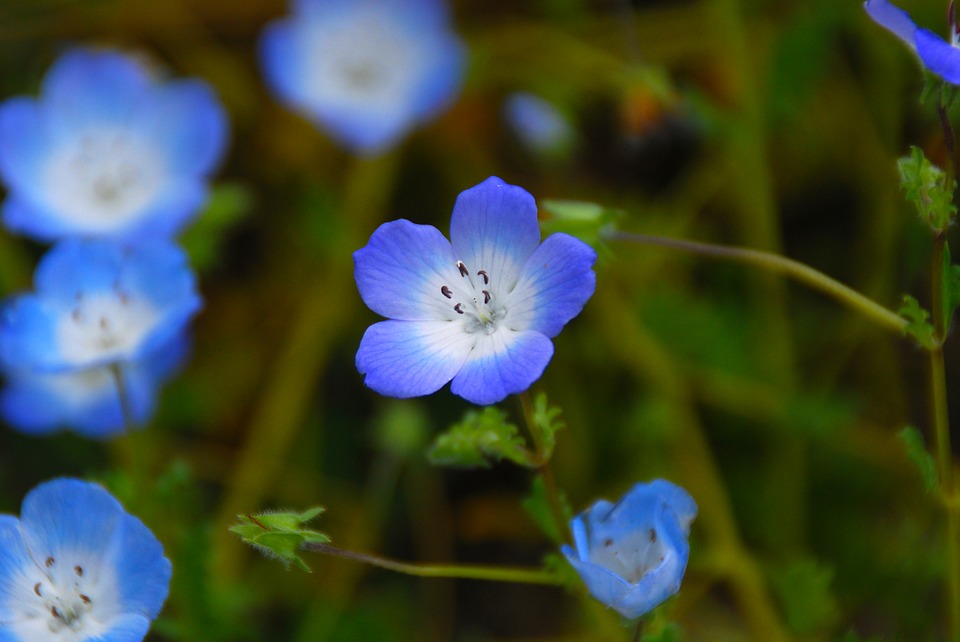
All About Those Baby Blue Eyes
Baby Blue Eyes plants are gorgeous flowers in the Nemophila genus with a Forget-Me-Not blue coloring. The scientific name, Nemophila, means “woodland-loving” (from nemus “grove” and philos “loving”). Growing these flowers can ensure helpful insects visit your garden regularly. The flowers are spectacular when they first bloom and attract a variety of beneficial insects such as bees, butterflies, and an entire host of other helpful insects.
Baby blue eyes grow in the Western United States, primarily the Baja area of California, and are a native plant. However, they are now grown around the world.
Have you been considering growing some in your garden? Well, let us show you how to grow a few Baby Blue Eyes Flowers of your very own!
The Best Use of Baby Blue Eyes
The first thing to know about Baby Blue Eyes is that they spread. They’re low plants that are very shrub-like. They don’t spread very far, but they can grow up to 6 to 13 inches high. They can also be over a foot wide. Baby Blue Eyes Plants look excellent alongside pastel flowers and even native wildflowers too. They grow best in moderate temperatures such as late spring and early summer.
Baby Blue Eyes are perfect to use as border plants, in containers or even rockeries. Baby Blue Eyes are very easy to care for and simple to grow as well. They are one of those plants which will give you little trouble when it comes to growing them. In California, they are used to arid zones, so they can withstand some tougher weather if necessary.
Where to Grow
The best way to grow baby blue eyes is right from the seed itself. Pick out a location where the flowers can get some partial shade and full sun. These flowers do require a bit of shelter from the wind as it can knock them down easily. These plants do well in gritty, sandy soils. The best time to sow the seeds is when the temperature is a steady 60 F. The soil must be able to drain well, and only cover the seeds with a 1/16 inch of soil.
It will take anywhere from a week to ten days for the flowers to germinate. Be sure to keep the soil moist where the seeds were planted until they germinate. Baby Blue Eyes don’t do well when it comes to transplanting, so be sure to plant them directly into the soil to avoid any mishaps.
One of the most famous places to see Baby Blue Eyes flowers is Hitachi Seaside Park in Japan. In the spring of each year, millions of Baby Blue Eyes bloom in a glorious display of color. Until you are able to travel to Japan to see it for yourself, we’ve included a video showing this amazing spectacle of nature.
Care
Baby Blue Eyes require little maintenance when it comes to their care. They are drought-resistant, so they won’t run up your water bill. Usually just watering them whenever the soil is dry is good enough for these flowers. However, if drought conditions are severe, the flowers will die. They can only handle so much. On the bright side, Baby Blue Eyes flowers don’t need fertilizer. These plants are used to growing in the very sandy soil, to begin with. At best all they need is a rich, organic soil if you want to make sure your baby blues stay fed.